TRADITIONALIST FORUMS have been abuzz during the past few weeks over the fate of Christ the King Abbey, in Cullman, Alabama, which ended up in the hands of the Novus Ordo church four months after the death of its founder, Benedictine Father Leonard Giardina.
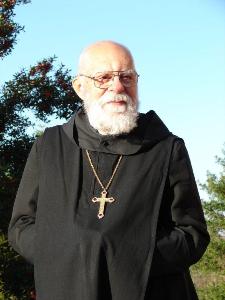
Rt. Rev. Leonard Giardina OSB
How can one account for this betrayal of all the traditional Catholics who supported the monastery over the years? And who is ultimately responsible for it?
It is a tale of a tragedy that almost inevitably ended in treason.
.
FOUNDATION AND WORK
—————————————————————–
Father Giardina, formerly a member of St. Bernard Monastery in Cullman, founded Christ the King in the early 1980s.
During the upheaval after Vatican II, his superiors at sent him to Notre Dame for some theological “updating.” Father resisted the brainwashing, left the St. Bernard’s, took a job in a grocery store in Cullman to support himself, and started offering the traditional Latin Mass for a small group of faithful Catholics in the area.
Thanks to the help of a successful businessman, Fr. Giardina was able to obtain land and found a monastery. Word of this new foundation spread, and his monastery soon drew extensive financial support from all varieties of traditionalists throughout the U.S.
Unlike most Benedictine monasteries in the U.S., the monks at Christ the King conducted no active apostolate. They recited part of the day hours of the Divine Office in common, and performed manual labor on the monastery grounds.
Fr. Giardina visited us at St. Gertrude the Great in 1991 to preach at our Forty Hours’ Devotion. As a result of that contact, a number of our parishioners took an interest in the monastery. Some became Benedictine Oblates, and occasionally visited the monastery to make private retreats.
Father steered clear of the Society of St. Pius X and its Benedictine affiliates. During his visit here, he regaled us with a number of amusing anecdotes about his encounters with the rather “French-fried” Benedictinism of the latter.
On the other hand, Fr. Giardiana was studiously coy about revealing his position on the question of the pope. As far as I know, he never made any public statements one way or the other.
Fr. Giardina’s monastery newsletter, Speculum, moreover, routinely printed a denunciation of traditionalists who engage in “controversy” and “sterile polemic.” Such questions, readers were assured, were of no interest to monks, who only sought to be “spiritual.”
Father’s caginess on the pope question and his repeated “We’re-too-spiritual-for-controversies” protests, though, struck me as nothing more than a clever two-pronged fundraising ploy:
(1) Say absolutely nothing about the pope, so you can hit up all categories of traditionalists for donations: sedevacantists, SSPX-ers, independents, and Motu types.
(2) Play up the “I’m-only-a-humble-unworldly-monk” routine.
On the latter point, having spent some time as a monk myself, I am well aware how some of the sons of St. Benedict ham up the “humble monk” shtick whenever they sniff the scent of a potential big benefactor.
The double formula was a gold mine for Christ the King Abbey. Fr. Giardina played it to the hilt, and the bucks rolled in.
But in the long run, it sowed the seeds for abbey’s surrender to the modernists.
.
FR. GIARDINA AND SEDEVACANTISM
—————————————————————–
In the 1990s, we heard stories that Fr. Giardina followed the “material-formal” thesis on the question of the pope. This thesis originated with Bp. Guérard des Lauriers, and in the practical order amounts to the same position as sedevacantism.
Naturally, Fr. Giardina said nothing whatsoever publicly about his adherence to this position, so the monastery’s delicate fundraising ecosystem remained undisturbed.
Nevertheless, Bishop Robert McKenna, who also adheres to the material-formal thesis, ordained several priests for Christ the King.
Bishop McKenna also formally blessed Fr. Giardina as an abbot. The night before the ceremony, Fr. Giardina assured Bp. McKenna that he did not mention the name of John Paul II in the Canon of the Mass.
The number of parishioners who regularly assisted at Mass at the monastery chapel was between 60–100. Most were sedevacantists.
.
MY 2007 VISIT TO THE ABBEY
—————————————————————–
In 2007 Fr. Giardina contacted me and invited me to spend a few days at the abbey. This came as quite a surprise, because of my own reputation as both a sedevacantist and, needless to say, a controversialist.
The reason I was given for the invitation was this: Fr. Giardina wanted to find a way of publicly announcing that Christ the King Abbey was indeed sedevacantist. So, photos of yours truly, taken at the monastery with Father Abbot, would be published in the monastery newsletter as a way of beginning to break the news gently to friends and benefactors.
I figured that, at long last, Fr. Giardina had finally come around.
I spent a few pleasant days at the abbey after Pentecost, was duly photographed with the abbot and had a number of very positive discussions with some of the monks about the sede vacante question. It all seemed to go very well.
I also broached the topic of insuring that the monks received a proper formation in Latin, philosophy and theology before ordination. Church law prescribes that all priests, even those who will not pursue an active pastoral apostolate, receive a full seminary formation.
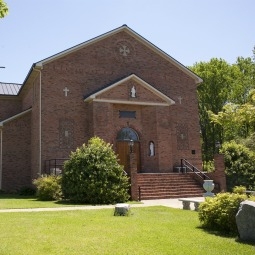 Though the young monks were of very good will, they had been ordained with very little intellectual formation. They knew little theology and less Latin, but they were aware of this shortcoming and wanted to correct it.
Though the young monks were of very good will, they had been ordained with very little intellectual formation. They knew little theology and less Latin, but they were aware of this shortcoming and wanted to correct it.
I told Fr. Giardina that if he wanted, I would investigate some possibilities for arranging for the monks to get some proper classes, perhaps via video links. I also expressed my fear to him that, without a proper theological formation, his monks could easily be gulled into joining the Conciliar Church once he was dead.
Father was agreeable to my proposal, and said he would let me know.
So, I left the monastery feeling quite optimistic.
But nothing whatsoever came of my visit. Father never got back to me on the question of classes for the monks, and he never published any announcement about the pope question. The matter died.
In fact, the news eventually got worse. Over the past few years, lay visitors to the abbey who inquired whether the monks acknowledged Benedict XVI as pope in the Canon of the Mass were firmly refused an answer.
.
DIVISION AND DEATH
—————————————————————–
It now appears that the younger monks were divided on the question of the pope, though their common esteem for Fr. Giardina held the community together as long as he was alive.
As Fr. Giardina’s health began to fail in old age, the divisions became more pronounced.
Father Sebastian Glentz, one of the two monks who turned the monastery over to the Novus Ordo church, said, “We did not discuss the issue; we prayed about it. Behind the scenes, our community was divided.”
Fr. Glentz had for some time been engaged in behind-the-scenes contact with the Novus Ordo authorities. He claimed that in December 2010 Fr. Giardina had given him permission to do so. But another monk later disputed whether by this time Fr. Giardina, who had become quite feeble, truly understood what was going on around him.
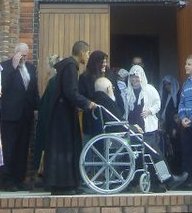 By late 2010 the monastery was down to five monks: two sedevacantist priest-monks, Fr. Giardina, Fr. Glentz and Fr. Michael Sauntner, who also favored joining the Novus Ordo.
By late 2010 the monastery was down to five monks: two sedevacantist priest-monks, Fr. Giardina, Fr. Glentz and Fr. Michael Sauntner, who also favored joining the Novus Ordo.
Since Fr. Giardina had put Frs. Glentz and Sauntner in control of the civil corporation that owned the monastery property, they were able to engineer the expulsion of the two sedevacantist monks from the monastery in December 2010.
On January 7, 2011, Fr. Giardina died and was buried with a Low Mass.
In early March, Fr. Glentz and Sauntner closed the monastery church to the public, and placed a statement in the parish bulletin announcing their intention to defect to the modernists.
On May 1, the Bishop of Birmingham received the vows of Frs. Glentz and Sauntner as “canonical hermits” of the diocese.
Clergy from the Canons Regular of St. John Cantius, a group in the Archdiocese of Chicago that offers both the Novus Ordo and the traditional Mass, have been installed in the monastery to assist Frs. Glentz and Sauntner during their “transition.”
The tragedy had played out, and the treason was complete.
The betrayed laity who assisted at Sunday Mass at the monastery chapel have now abandoned it. Fortunately, the CMRI Fathers were able to set up a mission in the area immediately.
Benefactors of the monastery — and not just the sedevacantists — now rightly believe that they have been hoodwinked and cheated. They donated generously to Christ King Abbey precisely because it had NO connection with the Novus Ordo. But now the fruits of their sacrifices have been turned over to the service of the Robber Church.
.
WHY DID IT HAPPEN?
—————————————————————–
Understandably, traditionalists have loudly denounced Frs. Glentz and Sauntner for handing the monastery over to the false religion of Vatican II. But in large measure, this is to misplace the blame.
For how could Fr. Glentz and Sauntner have been expected to resist the blandishments of well-educated and smooth-talking Conciliarists (a former bureaucrat from the Roman Curia among them) if they themselves had no formation in traditional Catholic theology?
Fr. Sauntner in particular is an extremely simple man. In a normal monastery, he would have remained a lay brother all his life and never been ordained. How could someone as child-like as he see through the deceptions of some curial crocodile with a doctorate in canon law?
Or how could Frs. Glentz and Sauntner have been expected to worry about affiliating their insitution with the poisonous errors of the Conciliar Church if their beloved Fr. Giardina had been saying for decades that monks should have no interest in “sterile polemics” about such issues?
Or how could Frs. Glentz and Sauntner have been expected to resist an offer to “come under obedience to the Pope” if Fr. Giardina kept a total public silence on the the question of the pope and refused to discuss it?
Or how could Frs. Glentz and Sauntner have been expected to at least seek the advice of other traditionalist clergy about the step they were going to take if Fr. Giardina (as one of the sedevacantist priest monks said) had been depicting all other traditionalists, rather than the Conciliar Church, as “the real enemy”?
The primary responsibility for the tragedy and the treason of Christ the King Abbey, one must sadly conclude, lies not with these men, but with Father Leonard Giardina.
This, I know, is a severe judgment on a kind priest who had many virtues.
But it was not Fr. Giardina’s virtues that led to his monastery ending up in the clutches of the Robber Church. It was Fr. Giardina’s refusal to educate his monks as the Church required, his refusal to address the issues of the day, his refusal to adopt a clear position on the question of the pope and his portrayal of other traditionalists — rather than the modernists — as the real enemy.
What he failed to do and the consequences should serve as a sobering lesson and warning for other traditionalists. Christ the King Abbey is one of so many traditionalist institutions that began in resistance, operated without coherent theological principles, and therefore ended in surrender.
In a 2003 article, Untrained and Untridentine: Holy Orders and the Canonically Unfit, I outlined the requirements church law and the popes had laid down for proper seminary training, and I discussed at some length its importance for traditional Catholic clergy.
I also listed objections that had been made against insisting on this training, including one I drew directly from Fr. Giardina’s newsletter — in essence, that clerical education leads to pharisaism and pride. Fr. Giardina’s objection, together with my response, were as follows:
I. Sterile Polemic. “You are engaging in sterile intellectual polemics in which we have no interest. Your comments are uncharitable, unspiritual and divisive. As a priest, you should keep them to yourself. You are like the Pharisee who boastfully looked upon himself as someone special above the rank and file of the unworthies of the world!”
Response: Here is Pius XI on our responsibility to speak out against an ill-trained clergy: “What a terrifying account, Venerable Brethren, we shall have to give to the Prince of Shepherds, to the Supreme Bishop of souls, if we have handed over these souls to incompetent guides and incapable leaders.”
And so it was to “incompetent guides and incapable leaders” that Fr. Giardina entrusted his life’s work. And they in turn, handed it over to the wolves.
A terrifying account, indeed, for any man to have to render to the Prince of Shepherds.
We should therefore be solicitous to pray for the repose of the soul of Father Leonard Giardina. Most especially, we should to have many Masses offered for his soul — for the Masses offered for him in the monastery he founded will be no Masses at all.
May God grant Fr. Giardina eternal rest.
And may He now smash the walls of Christ the King Abbey down into the dust.
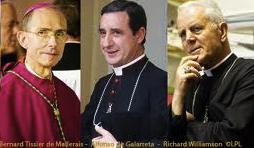
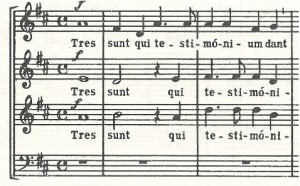
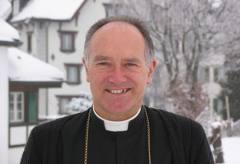

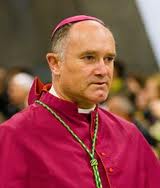
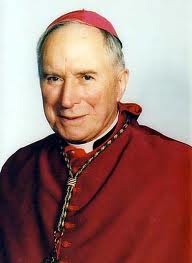
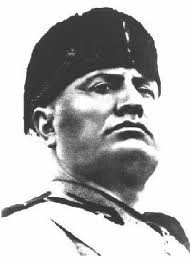

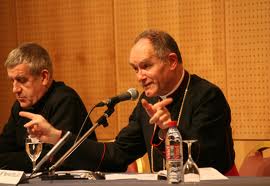
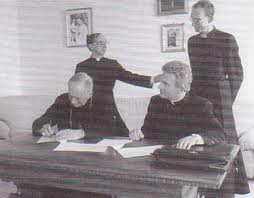
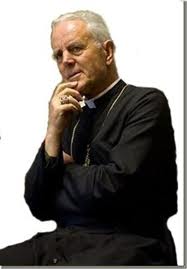
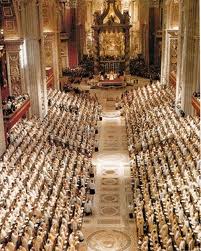
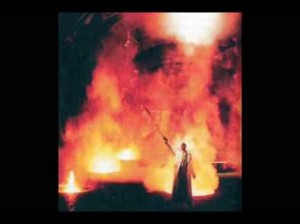
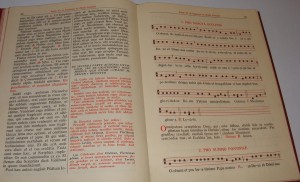
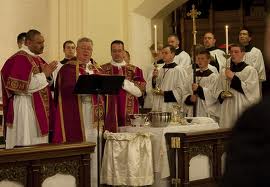
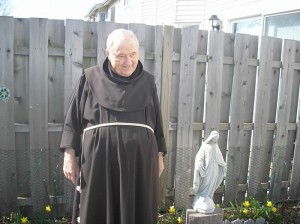
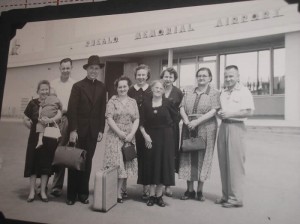
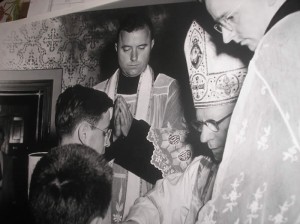
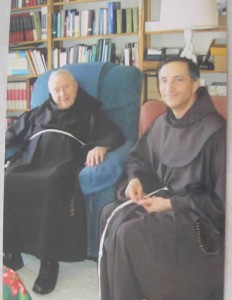


 By late 2010 the monastery was down to five monks: two sedevacantist priest-monks, Fr. Giardina, Fr. Glentz and Fr. Michael Sauntner, who also favored joining the Novus Ordo.
By late 2010 the monastery was down to five monks: two sedevacantist priest-monks, Fr. Giardina, Fr. Glentz and Fr. Michael Sauntner, who also favored joining the Novus Ordo.